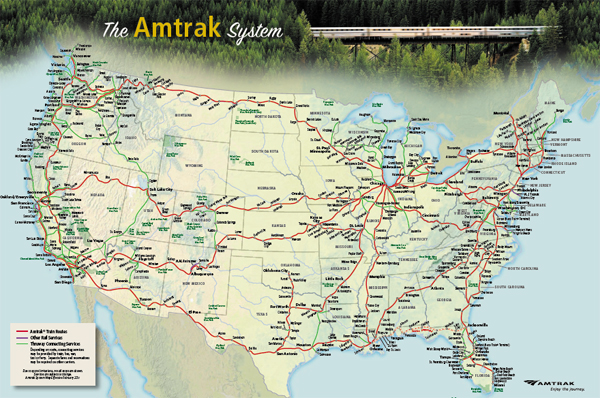Happening Now
Soviet-style railroad or modern mobility machine? (Hint: check the ridership)
August 15, 2013
Written By Colin Leach

Amtrak rarely catches a break these days in Congress. Hostile legislators attacked the railroad on multiple fronts, offering amendments to both House and Senate transportation bills to cripple the railroad’s operations. These attacks, ranging from Senator Jeff Flake’s amendment to prevent federal funds from being used to cover the costs of long-distance food service, to Rep. Paul Broun’s amendment that would have defunded Amtrak’s operation grant entirely, rest on the same misguided accusation. That accusation is one all too familiar to railroad advocates: that Amtrak is, to quote Rep. John Mica, “a Soviet-style railroad with Soviet-style operations” that deserves the chopping block.
If Mica’s claim were true, we would expect to see few, if any, taking Amtrak. But Amtrak’s mostrecent ridership figures show that more Americans than ever before are flocking to the rails. In July, Amtrak carried a record 2.9 million passengers, the railroad’s highest monthly total in its 42 year history. Even more striking is where the gains were. Rather than being focused on already highly-used services such as the Northeast Corridor and Midwest regional trains, the gains are found across the board.
Even the long distance trains, frequently ridiculed by Amtrak opponents as “money-losing” operations, have seen spectacular growth. July ridership on the New York-Washington-ChicagoCardinal grew by an incredible 19.3% compared to July 2012, whereas ridership on New York-Savannah Palmetto grew by 8%. The Washington-Chicago Capitol Limited and the Chicago-San-Antonio-Los Angeles Texas Eagle saw increases of 7.2% and 6.3% respectively, indicating healthy patronage of long-distance services.
Short-distance services outside of the immediate Northeast Corridor are also seeing heavy increases.Empire Service trains linking New York City to Albany saw a 7.7% increase, whereas the Piedmontservice between Charlotte and Raleigh witnessed a 2.5% increase. The Chicago-MilwaukeeHiawathas enjoyed a 5% increase, due in no small part to persistent congestion on Interstate 94. In Pennsylvania, both the Keystone and the Pennsylvanian saw substantial increases in ridership over 2012, increasing an average 6.8% on both services.
Reflecting on the railroad’s success, Amtrak President Joe Boardman observed that the figures confirmed Amtrak’s status as a critical part of our nation’s transportation infrastructure, providing “mobility and connectivity” to communities across the country. Record ridership numbers also confirmed that Amtrak was an “economic engine” that helped smaller communities “grow and prosper”. This unique ability of passenger rail cannot be stated enough, as we argued in a 2012 white paper on the economic benefit of long distance trains. Passenger rail travel has the unique potential to generate trips between smaller cities and larger urban areas at a lesser cost than either air or bus service, offering unique opportunities for economic growth in both urban and rural areas.
But we must not rest on our laurels. Even now, NARP and its members are hard at work fighting for more and better passenger trains across the country. Following our joint campaign with Western Pennsylvanians for Passenger Rail to keep the aforementioned New York-Pittsburgh Pennsylvanianfunded, we have now turned our attention to other routes in need of help. We most recently wroteIndiana Governor Mike Pence concerning the future of the Chicago-Indianapolis Hoosier State, and we have also partnered with our friends at ColoRail on a campaign to encourage grassroots support to save the present route of the Chicago-Los Angeles Southwest Chief.
Rail advocates can take heart in these newest ridership figures; we know that Americans agree with our goal of more trains. Convincing the politicians is, however, quite another matter.
"On behalf of Amtrak’s onboard service staff, I want to thank the Rail Passengers Association for honoring their hard work with this award. The past couple years have indeed been difficult for Amtrak onboard service staff – coping with furloughs and job insecurity, adapting to changing protocols and services, not to mention the unfortunate events such as a tragic derailment and a fatal shooting. Nevertheless, our dedicated members at Amtrak have handled these hurdles with the care, attention and diligence for which they’re known. We thank Rail Passengers for their acknowledgement of our members’ hard work and, as always, look forward to seeing you on the rails."
Arthur Maratea, TCU/IAM National President
December 21, 2021, on the Association awarding its 2021 Golden Spike Award to the Frontline Amtrak Employees.
Comments